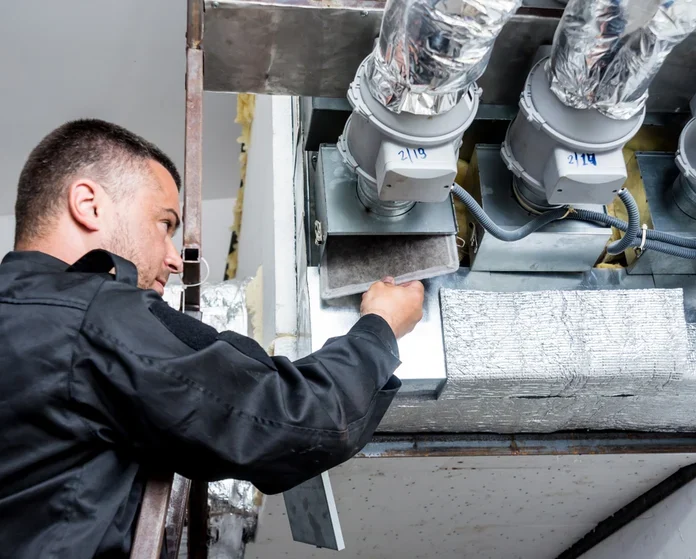

R-410A is a refrigerant made by combining components R-22 and R-125. It is classified as a hydrofluorocarbon (HFC). It rose to prominence in the HVAC industry in 2010 with the global ban on R-22 in new HVAC units after studies showed that R-22 contributed to global warming. With that ban, R-410A became the standard refrigerant for new units.
Its reign was short-lived, though, with growing awareness that R-410A is a greenhouse gas with a Global Warming Potential (GWP) of 2088. This means it is 2088 times more potent than Carbon Dioxide in GWP. Since R-410A needs to operate at a much higher pressure than R-22, system leaks are more likely to release the gas into the atmosphere.
These two issues caused the U.S. Environmental Protection Agency to attempt to discontinue the use of R-410A in new HVAC units and heat pumps in 2023. That date was later revised to January 1, 2025, which is less than a year from now.
Just as the EPA stopped production of R-22 as of January 1, 2020, the expectation is that it will also end production of R-410A in accordance with the upcoming ban. However, it is essential to know that R-410A is still in production and approved for use at this writing, and demand continues.
The R-410A price is rising, as are prices for most HVAC supplies and components. This article will explore the rise in price for R-410A, the reasons behind it, and what HVAC contractors can do to mitigate the impact. It will also cover likely replacements for R-410A.
R-410A price fluctuations are due to a complex intersection of solid demand and shrinking supply, along with the effects of tariffs.
On the supply side, we have the effect of the American Innovation and Manufacturing Act of 2020 (AIM), which requires a phased 85% reduction from 2022 levels in production and use of HFCs. By 2024, production is set to be at 60% of 2022 levels.
You will recall that R-410A is a combination of components of R-22 and R-125. Currently, there is a worldwide shortage of R-125, with insufficient manufacturing capacity. Both China and the United States manufacture R-125, with China having a majority share.
In recent years, China’s artificially low pricing of R-125 relative to U.S. prices pushed U.S. manufacturers out of the market. That led to the United States imposing tariffs that substantially inflated the price of R-125 from China by around 210%. American buyers have few options since European prices are also high.
These increases hit contractors’ P&Ls by increasing the cost of maintenance jobs. According to an industry source in the Dallas market, the R-410A price was around $100 per 25 pounds in 2021. Recent price levels ranged from $300 to $600 for the same quantity, with the high price point occurring in peak heat months.
The lesson here is that contractors must stay on top of pricing movements to mitigate the impact of pricing volatility on their businesses.
In the long term, the solution to the R-410A problem is the introduction of new refrigerants.
The EPA recommends several alternative refrigerants, known by their ASHRAE and ISO 817 designation of A2L, denoting non-toxic, low flammability. EPA-acceptable refrigerants include R-32, R-454B as well as R-452B, R-454A, R-454C, and R-457A.
The advantages of A2L refrigerants are:
The disadvantages are:
Part of the reasoning for the gradual phase-out schedule of R-410A is to allow the industry to prepare for the change.
At today’s inflated prices, managing your usage of R-410A is important to keep your short-term refrigerant costs down.
First, make sure your gauges are accurate, and check them frequently.
Promote regular maintenance visits for customers. Educate the customer about the value of preventive maintenance. Include leak testing in those visits and explain the value of avoiding refrigerant waste.
There is a wide range of testing methods, from UV light-detectable dyes to electronic leak detectors to old-fashioned bubble testing, which entails spraying a bubbly solution on pipe connections and valves. These tests can provide interesting demonstrations for customers.
Know your annual usage of R-410A based on your maintenance visit schedules and past refrigerant usage per visit. Go to market and get bids from reputable suppliers for one year at a time. If you have a high annual volume, try to leverage it to get a lower price or set a cap on yearly price increases.
Make sure prospective suppliers have a good track record of performance. Ask for and follow up on references. Be sure to maintain open and frequent communication on your refrigerant needs.
Alternatively, eliminate the time-consuming manual bidding and negotiating process entirely by implementing an AI Powered Procurement Platform that aggregates buying power and provides pre-negotiated contracts with verified suppliers.
The ongoing phaseout of R-410A refrigerant portends a continuing escalation of costs for HVAC contractors and the accompanying pressure on margins. To mitigate the bottom-line damage, HVAC contractors must proactively manage their refrigerant costs.
Solid knowledge of past usage and costs along with accurate projections of future usage is the only way to purchase your refrigerant needs effectively. Savvy negotiating tactics and strong supplier relationships are keys to success. You need to be well-informed about the market for refrigerants, and constant and open communication with your suppliers is key.
R-410A will be phased out of new HVAC unit production in under a year. Start now to learn about regulatory requirements around the R-410A phaseout and the alternative refrigerants approved by the EPA. Your supplier should be your trusted source of market information.
In short, it’s time to begin the transition. Stay engaged with the evolving situation for best results.
To improve your margins, discover the benefits of participating in a premier purchasing program like Raiven. By leveraging the collective buying power of its members, Raiven secures exclusive discounts and pricing agreements for HVAC equipment, air filters, parts, and other HVAC business essentials.
Raiven has pre-negotiated discounts with refrigerant suppliers ensuring you get the best prices on refrigerants and have priority access to stock. In addition, Raiven’s custom marketplace puts your refrigerant suppliers in one place saving you time and effort in purchasing.
Beyond refrigerants, gain access to pre-negotiated discounts of 7%-30% from industry-leading manufacturers and distributors like Alpscontrols, Carrier, Ferguson, Ford, Grainger, Graybar, Home Depot, Koch Filter, Schneider Electric, Sunbelt Rentals, United Rentals, and more!
And Raiven helps you stay abreast of supply chain fluctuations in refrigerants and the HVAC industry, alerting you to disruptions, challenges, and opportunities. The right information, and the right planning will give you the edge on your competition leading to winning more jobs and making more profit.
Contact Raiven today to learn more about how we can help you and your HVAC business succeed.
